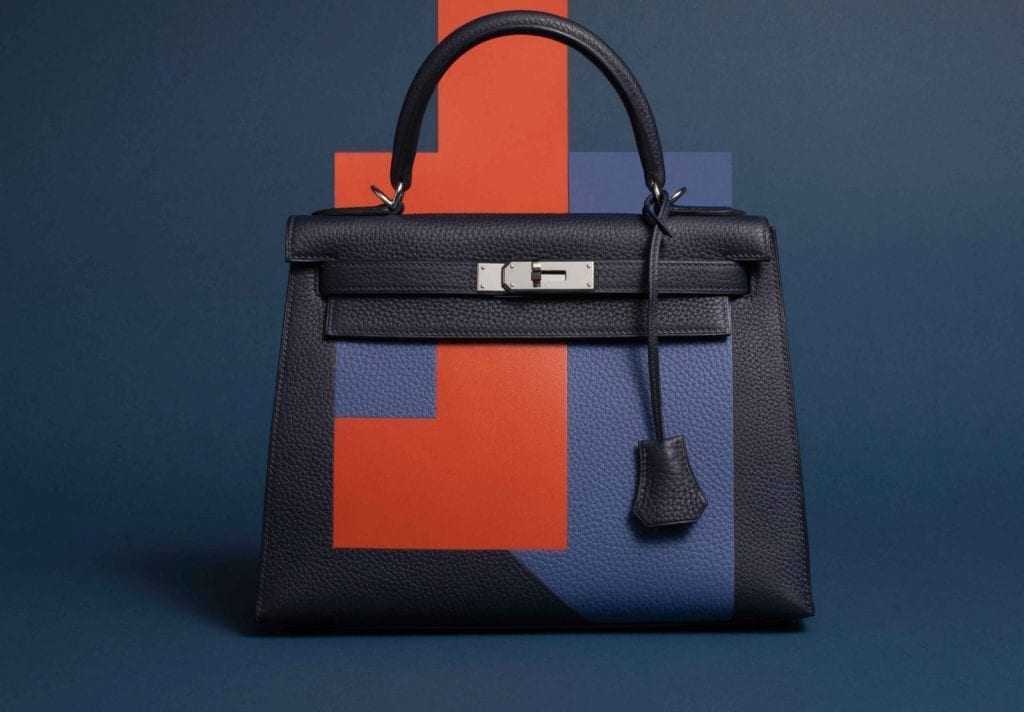In the 1930s, a century after Hermès first opened its doors as a purveyor of exquisitely-crafted leather goods, such as saddles, harnesses, and carriage fittings, Robert Dumas, the head of the Paris-based company’s artistic helm at the time, took a slightly different direction with the family-owned company’s offerings. Branching out beyond its history of exclusively producing equestrian wares, Dumas created a small leather handbag.
“It had a trapezoid shape, two triangular gussets, a sculpted flap, a handle, and good storage space,” Hermès reflected decades later. “It was nothing fancy, just a neat, plain, functional bag … with straps was an emblematic Hermès design: both highly desirable yet anonymous. It simply needed a name.” What was initially known as the “Sac à dépêches” would ultimately become the famous “Kelly” bag some 20 years later in 1956 when it was renamed in a nod to Hollywood actress-turned-Princess of Monaco Grace Kelly.
In addition to amassing trade dress rights in the configuration of the bag, itself (i.e., “a handbag with trapezoidal sides, a rectangular bottom, and a dimpled triangular profile; a rectangular flap [on the top] having a protruding rectangular center portion that fits beneath a horizontal rectangular strap having an opening to receive a padlock eye; [and] a lock in the shape of a padlock forms the clasp for the bag at the center of the strap.”), as an indicator of source in the United States, and beyond, Hermès maintains trademark registrations for “Kelly” in connection with its use of the word mark on handbags in jurisdictions across the globe – from the U.S. and its native France all the way to Singapore and Australia.
Also among the now-183-year old company’s arsenal of trademark registrations for “Kelly” is a Japanese registration, which was at the center of a recent proceeding initiated by Hermès to formally oppose the pending application of an Osaka, Japan-headquartered handbag company called D. Kelly.
As first reported by trademark attorney Masaki Mikami, Hermès recently prevailed in a trademark fight against D. Kelly, which was using its name in connection with its brick-and-mortar outposts in Japan and its e-commerce website, as well as on its various bags, none of which appear to mirror the design of Hermès’ offerings, and seeking a trademark registration for the name, as well. While the parties’ bags may not look alike and certainly are not priced similarly (as Kelly bags, which retail for upwards of $8,000, are some of the most expensive bags on the market), counsel for the Hermès argued that consumers might confuse the offerings of the two companies based on the Japanese handbag-maker’s use of the “D. Kelly” mark. As such, Hermès argued that the national trademark body should refuse to register the mark.
According to Hermès’ formal bid to block D. Kelly’s registration, even with the letter “D” in the mix, the core element in the mark is “Kelly,” and since both of the parties use their respective – and similar – trademarks on the same types of goods, namely, handbags, relevant consumers may (falsely) associate “D.KELLY” with Hermès and its famed Kelly bag. Such a potential for confusion is bolstered, per Hermès, by the fact that it has a “remarkable degree of reputation” and consumer recognition in connection with its sale of handbags, including its Kelly style.
The Japanese trademark body agreed. Siding with Hermès in a decision in late March, the Japan Patent Office (“JPO”) – which handles trademarks in addition to patents – refused to permit D. Kelly’s application to proceed in the registration process after finding a high degree of similarity between the two parties’ marks in connection with handbags.
Pointing to evidence submitted by Hermès, the JPO determined that the brand has been consistently using its “Kelly” mark since 1956, and for the past 15 years, has been selling between 2,000 and 4,000 Kelly bags per year, which translates to between JPY 1.6 and 4.6 billion ($14.9 million to $42.9 million) in Kelly-specific revenue. With such consistent use, enduring third-party media attention and advertising, and sales in mind, the JPO found that there is a high degree of recognition in the “Kelly” mark as an indicator of the Hermès bag and brand, and refused to register D. Kelly as a result.
As for how Hermès’ most coveted handbags, its Birkin and Kelly models, are faring in light of the COVID-19-induced economic downturn, demand is hardly waning. On the heels of reports that the Paris-based brand generated $2.7 million in sales on a single day when it reopened its Guangzhou flagship, resellers are saying that Hermès’ most time-tested bags are holding their value, and in fact, may actually be more in demand than usual.
In terms of the Hermès business, as a whole, the company revealed in April that its sales fell by 7.7 percent in the first quarter of the year to $1.63 billion as the Coronavirus outbreak forced it to close up its workshops and stores across the globe. But while the stalwart French luxury brand’s revenue might be down, that 7.7 percent is less than the expected 12 percent drop, prompting analysts to call the financial results for the three month period “the strongest organic growth performance of the luxury goods sector.”














